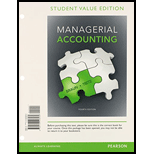
REAL LIFE
Polly Products is a recycled plastics manufacturer located in Mulliken, Michigan. It makes plastic “lumber” called Polly Planks from 100% recycled plastics. It also builds park benches, picnic tables, and other outdoor amenities from the Polly Planks it produces.
Plastic lumber like that made by Polly Products is typically manufactured using an extrusion process. Post-consumer plastics (milk jugs, bottles, and other plastics) are purchased from municipalities and other recyclers. Much of plastic lumber is produced from post-consumer milk jug material. At the recycler, the milk jugs are crushed into giant cubes, weighing 800 to 1,000 pounds per pallet. When an extrusion manufacturer receives the milk jug, the manufacturer puts the milk jug through a powerful shredder that cuts the milk jug into small pieces resembling confetti. The shredded milk jug is stored in large cardboard boxes called gaylords.
When production begins, gaylords containing shredded plastic are brought to the extrusion line. The shredded plastic is dumped into a large hopper. Other materials are added to the hopper at the initial start of manufacture, including oils, colorants, other plastics, and foaming agents. All of the ingredients are stirred in the hopper until thoroughly mixed. The materials then go into the extrusion machine. The extrusion machine melts the plastic into a hot liquid form. That liquid plastic is pushed through the extrusion machine through a screw mechanism into molds that give the plastic lumber its final shape.
Polly Planks can be sold as dimensional lumber in similar sizes as natural wood lumber, including 2” × 4”, 2”× 6”, and other sizes. The lengths of the Polly Planks can be 8’, 10’, or a custom length.
Polly Products also uses its Polly Planks to produce park benches, picnic tables, trash receptacles, and other outdoor amenities. Polly Products’ employees fabricate these outdoor amenities both for stock inventory and for special orders. Custom orders are likely to comprise a significant portion of Polly Products’ sales.
A manufacturer such as Polly Products would use a hybrid costing system rather than a pure process costing system or a pure
Requirements
- 1. Which product(s) manufactured by Polly Products would use elements of a process costing system? Give a detailed description of why you think that product (or those products) would require a process costing system.
- 2. Within the process costing portion of the hybrid system at Polly Products, what costs would be considered to be direct materials? What costs are likely to be in conversion costs in the process costing system? (Use your imagination to brainstorm about potential conversion costs at Polly Products since these costs were not directly addressed in the case.)
- 3. Which products manufactured by Polly Products would be likely to use elements of a job costing system? Again, explain your reasoning and be specific.
- 4. Within the job costing portion of the hybrid system at Polly Products, what are the direct materials? What would be direct labor? What costs are likely to be in manufacturing
overhead ? (Again, use your imagination to brainstorm about potential direct labor and manufacturing overhead costs.) - 5. In addition to
manufacturing costs , Polly Products has sales, engineering, and general administrative support costs. Are these costs relevant in the hybrid costing system? Why or why not? - 6. What major issues do you see in a hybrid costing system?
Trending nowThis is a popular solution!

Chapter 5 Solutions
Managerial Accounting, Student Value Edition Plus NEW MyLab Accounting with Pearson eText -- Access Card Package (4th Edition)
- Please provide the correct answer to this general accounting problem using valid calculations.arrow_forwardUsing the following information for Samson Corp, campute the gross profit.arrow_forwardI am looking for the correct answer to this general accounting question with appropriate explanations.arrow_forward
- Principles of Accounting Volume 2AccountingISBN:9781947172609Author:OpenStaxPublisher:OpenStax College
 Cornerstones of Cost Management (Cornerstones Ser...AccountingISBN:9781305970663Author:Don R. Hansen, Maryanne M. MowenPublisher:Cengage Learning
Cornerstones of Cost Management (Cornerstones Ser...AccountingISBN:9781305970663Author:Don R. Hansen, Maryanne M. MowenPublisher:Cengage Learning Managerial AccountingAccountingISBN:9781337912020Author:Carl Warren, Ph.d. Cma William B. TaylerPublisher:South-Western College Pub
Managerial AccountingAccountingISBN:9781337912020Author:Carl Warren, Ph.d. Cma William B. TaylerPublisher:South-Western College Pub



